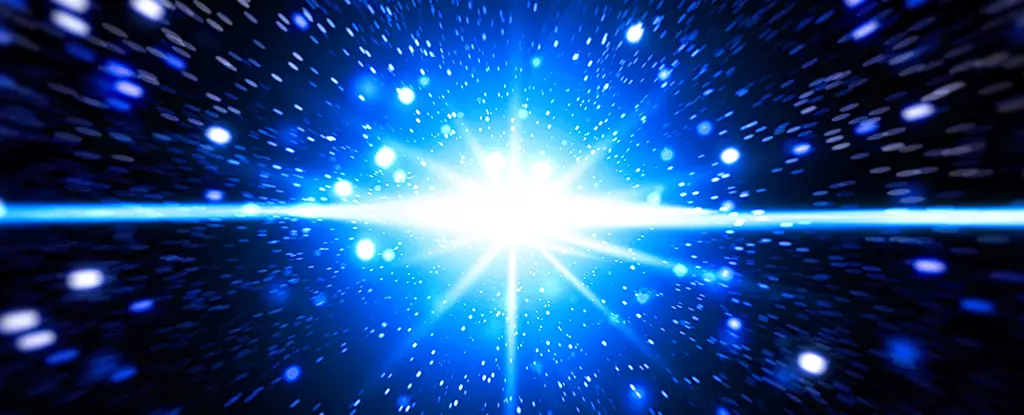A recent discovery has left scientists scratching their heads. An international team of researchers used the Australian Square Kilometer Array Pathfinder (ASKAP) to detect an exceptionally bright flash of radio waves. This particular event, dubbed FRB 20220610A, has traveled through the Universe for over 8 billion years, making it one of the furthest-reaching fast radio bursts (FRBs) recorded. However, what makes it even more perplexing is its incredible energy, exceeding the maximum predicted by current models by a factor of 3.5. Not only that, but the dispersion measure, a measure of the spread of wavelengths, did not align with expectations. This unexpected finding has led astrophysicists to reconsider the assumptions they make when using FRBs to study the Universe.
FRBs are rare celestial events, first discovered in 2007. These intense bursts of radio waves last for only a few milliseconds and have been observed sporadically. While some FRBs repeat, similar to earthquake aftershocks, others are one-off events. Scientists hypothesize that these emissions may originate from neutron stars, as their pressurized contents shift, causing them to be distorted by their powerful magnetic fields. The immense forces involved would explain the energy released in these bursts, equivalent to hundreds of millions of Suns. However, FRB 20220610A’s brightness surpasses even the most advanced models proposing high-speed particles colliding with stellar winds as the source of the bursts.
The unique characteristics of FRB 20220610A not only challenge existing theories about their formation but also question assumptions about the behavior of light in intergalactic space. Under normal circumstances, light travels at a constant speed but interacts with electromagnetic fields when passing through them. These fields cause different wavelengths of light to interact in distinctive ways, resulting in the familiar dispersion displayed in a rainbow. Similarly, the presence of gas and dust in interstellar and intergalactic space creates varying electromagnetic disturbances, causing wavelengths to slow at different rates. Previous studies proposed using the burst of light from FRBs to measure the density of material between galaxies and the expansion rate of the Universe. However, FRB 20220610A’s observations deviate from the expected dispersion measure, indicating that some dispersions are more complex than anticipated.
A Cosmic Storm of Plasma
In an attempt to explain the unusual properties of FRB 20220610A, the researchers suggest the presence of a turbulent, magnetized plasma in the path between our galaxy and the source of the burst, most likely within its host galaxy. The interference from this cosmic storm is believed to have disrupted the spectrum of the light emitted by the burst. These findings highlight the immense power of FRBs as astronomical tools, allowing scientists to uncover hidden aspects of the Universe. Each unexpected discovery brings us closer to unraveling the mysteries they represent and expanding our understanding of the cosmos.
The recent discovery of FRB 20220610A has raised more questions than answers. Its unprecedented distance and energy levels challenge existing theories and force scientists to reevaluate their assumptions about FRBs. Furthermore, the dispersion measure of this burst contradicts expectations about the behavior of light in intergalactic space. The presence of a turbulent, magnetized plasma along the path of the burst offers a tentative explanation for its unusual properties. As scientists continue to explore and study FRBs, these enigmatic celestial events shed light on the hidden secrets of the Universe.



Leave a Reply